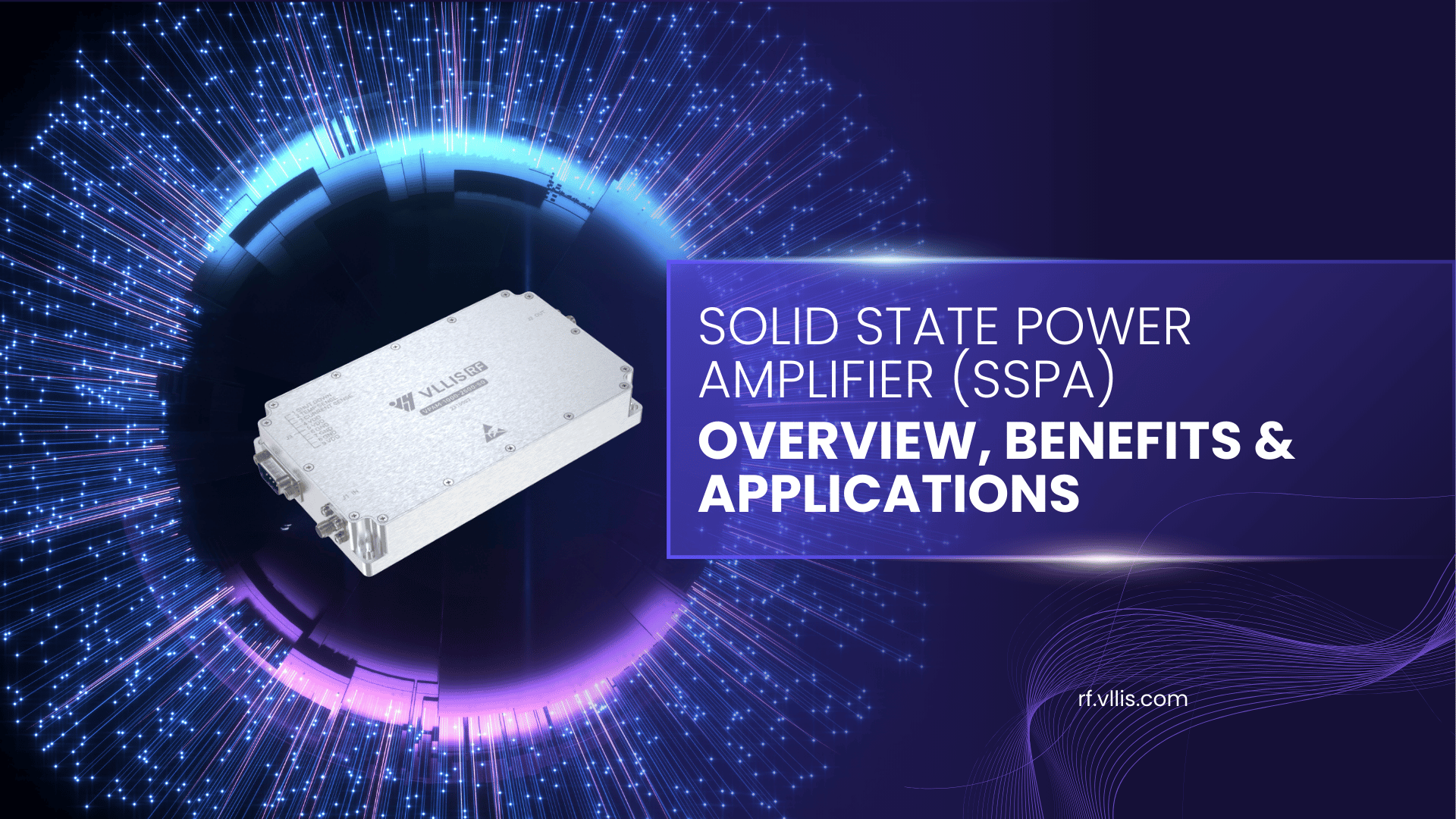Principles and Technical Features of SSPAs
Working Principle
An SSPA amplifies low-level RF signals using semiconductor transistors—commonly LDMOS, GaAs, or GaN. Amplification happens in stages, and multiple amplifier modules are combined using power-combining techniques to achieve high output power while preserving linearity and bandwidth.
Key Performance Parameters
- Frequency Range: MHz to tens of GHz (broadband).
- Output Power: Watts to kilowatts depending on configuration.
- Gain: Typically 30–60 dB.
- Efficiency & Linearity: Improved with modern GaN devices.
- Protection: Over-current, over-temperature, and VSWR protections are standard.
Core Technologies
Major SSPA innovations include GaN power transistors for higher power density, modular power combining strategies, advanced thermal management, and embedded intelligent control for monitoring and remote diagnostics.
Advantages of Solid State Power Amplifiers
Compared to vacuum-tube amplifiers (like TWTAs), SSPAs offer several practical advantages:
- Compact & Lightweight: Easier to integrate in modern platforms.
- High Reliability: Longer operational life without cathode wear.
- Instant-On: No warm-up time required.
- Low Maintenance: Modular replacement reduces downtime.
- Scalable Design: Modules can be combined to meet power needs.
Applications of SSPAs
Communication Systems
Satellite Communication: SSPAs are widely used in earth stations and uplink transmitters to provide reliable, high-power RF for long-distance links. In VSAT and satellite ground terminals, SSPAs help maintain signal integrity for telemetry and data transmission.
Cellular Networks (4G/5G): Base stations and small cells leverage SSPAs for wideband, linear amplification necessary for modern modulation schemes and high data throughput.
Radar Systems
SSPAs are used in defense, weather, and air-traffic control radars. Their rapid response, reliability, and ability to support pulse and continuous-wave modes make them suitable for a range of radar applications.
Test & Research
For EMC testing and laboratory research, SSPAs provide a stable high-power RF source. They are commonly used in test chambers, particle accelerators, and plasma generation experiments.
Industrial & Medical
SSPAs support industrial RF heating, materials processing, and plasma generation. In medical applications, SSPAs supply RF power for MRI coils and certain therapeutic devices.
Space & Emerging Applications
In spacecraft tracking, telemetry, and emerging wireless power-transfer systems, SSPAs are chosen for their reliability and scalability.
Future Development Trends
- Higher Power Density: Continued adoption of GaN and SiC devices.
- Broadband & Multi-Band Operation: Designs that cover multiple frequency bands with fewer components.
- Smart & Remote Management: Health monitoring, remote diagnostics, and predictive maintenance.
- Energy Efficiency: Improved PAE (power-added efficiency) to meet green design goals.
Conclusion
The Solid State Power Amplifier (SSPA) is a cornerstone technology in modern RF systems. Combining efficiency, reliability, and scalability, SSPAs are ideal for satellite communications, radar, EMC testing, industrial processing, and medical systems. As semiconductor technologies advance, SSPAs will become even more capable—offering higher power, broader bandwidth, and intelligent control features that power the next generation of RF applications.
Keywords: Solid State Power Amplifier, SSPA, RF Power Amplifier, GaN amplifier, Satellite Communication, Radar Systems, EMC Testing.
